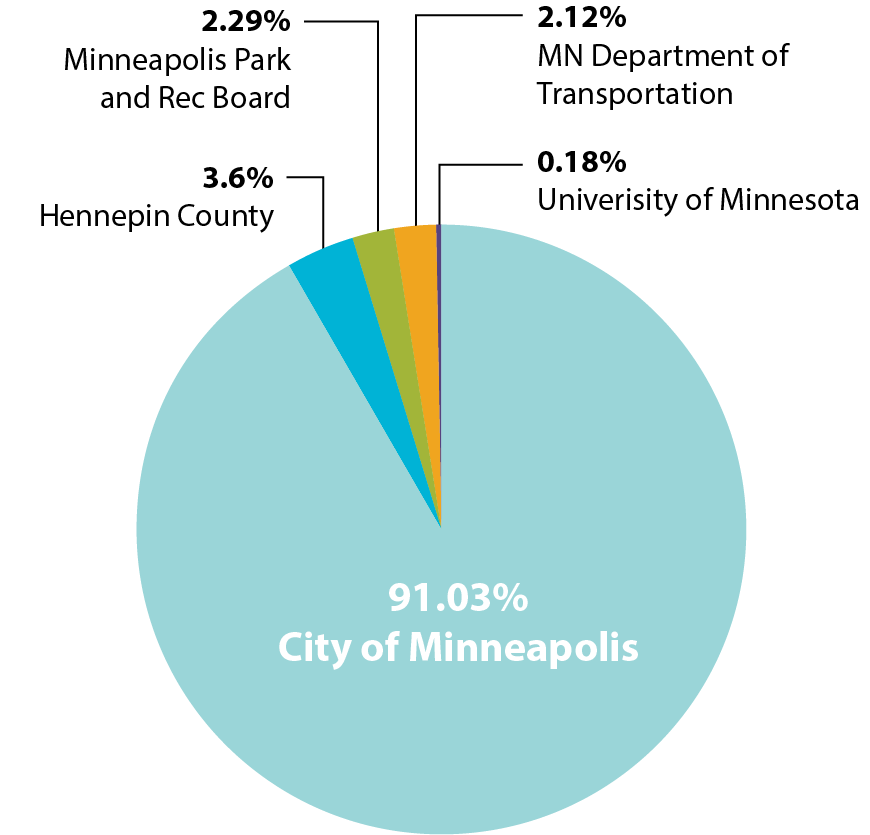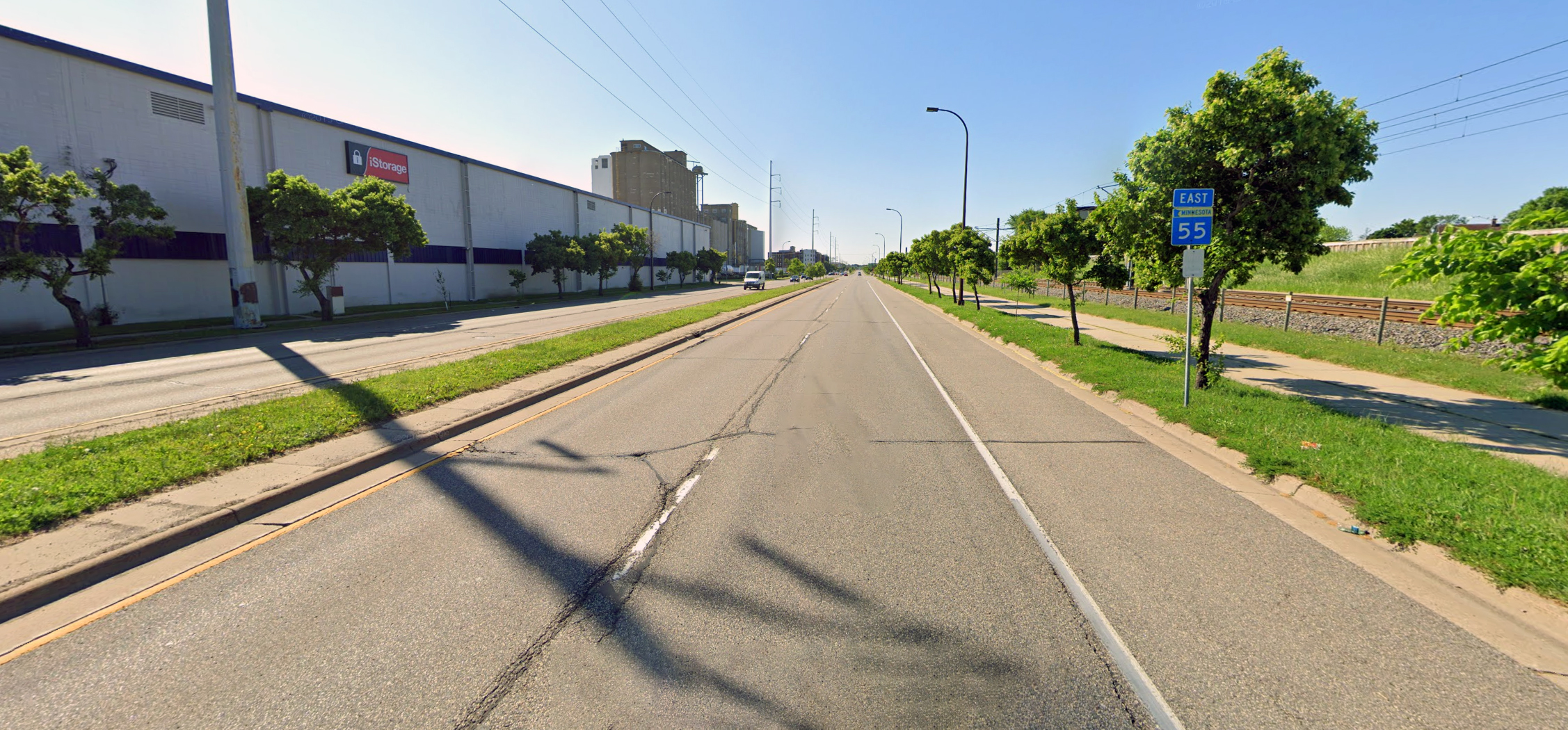INTRODUCTION
Key partnerships
Agency partnerships
The City cannot reach our goals without the support of other key agencies who own, operate and manage streets within the city. Hennepin County, the Minnesota Department of Transportation, the Minneapolis Parks and Recreation Board and the University of Minnesota all hold critical roles in the way our streets function. We partner at both the project level and the system-wide planning level with these agencies. While the reach of the TAP covers all streets within the city regardless of ownership, we acknowledge the jurisdictional roles and responsibilities of our partners regarding their streets.
- Hennepin County owns 85 miles of arterials within city boundaries, including some of our largest commercial corridors like Lake Street, Lowry Avenue, parts of Lyndale Avenue and West Broadway.
- The Minnesota Department of Transportation owns and operates 15 miles of state highways in Minneapolis and 30 miles of interstates, including 394, 94, and 35W. Notable Minnesota Department of Transportation state highways include Central Avenue, Hiawatha Avenue, Olson Memorial Highway, and University Ave NE.
- The Minneapolis Park and Recreation Board (MPRB) owns and operates 55 miles of parkways within city boundaries. These include most of the streets and trails along the lakes, river and creek, along with Kings Highway, and other parkways like Saint Anthony Parkway, Minnehaha Parkway and parts of East River Parkway.
- The University of Minnesota owns just over four miles of streets within city boundaries. These include Pillsbury Drive SE, Delaware St SE, Church St SE, 23rd Ave SE, Harvard St SE, Walnut St SE, 6th St SE, Beacon St, East River Road, 2nd St S, 5th St S, Union St SE, 21st Ave S and the University of Minnesota Transitway.
- The Navy owns about 1.5 miles of streets near the southern border of the city, though they are restricted for private use.
Road ownership

Source: Minneapolis Public Works, 2019
Minnesota Department of Transportation state highway within Minneapolis

Organization, industry and community partnerships
In addition to the agencies listed, the City has several key organizational, industry and business partnerships that will support us in achieving the strategies and actions outlined in this plan.
- Metro Transit is the operator of the regional transit system and delivered the transit service for 80.6 million trips systemwide in 2018, or an average of over 220,000 each day. They are a key partner in reaching our transportation vision in Minneapolis.
- Mobility providers – suburban transit providers, private ride-hailing companies and shared-micromobility companies are all partners in offering non-single occupancy travel options. These service providers offer new mobility options that promote equity and improve mobility, while transitioning dependency from the private automobile.
- The Twin Cities Shared Mobility Collaborative focuses on regionally advancing shared mobility and is a partner in advancing new mobility options.
- Philanthropic foundations are partners in our pursuit of data-driven decision-making and regional and national collaboration, particularly in the strategies and actions related to inviting new technology and advancing transportation options.
- Private industry, including freight shippers and business owners, are key partners for many of our freight strategies and actions.
- Private property owners and building managers are partners for maintaining and improving our pedestrian network, particularly when it comes to winter maintenance. They are also partners in coordinating improved freight deliveries. Private developers and the Minneapolis Community Planning and Economic Development Department are key partners related to implementing private sector related improvements through the development review process and other land use related strategies and actions.
- The University of Minnesota and other research institutions are key partners for freight and other data or research related partnerships.

